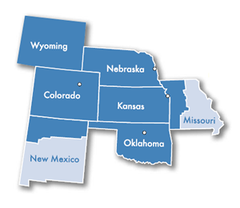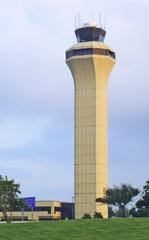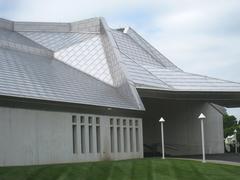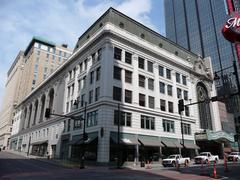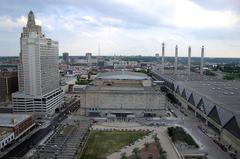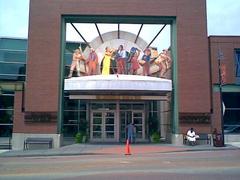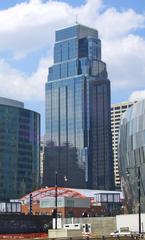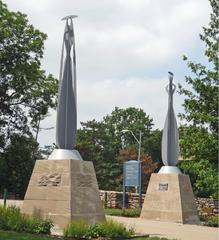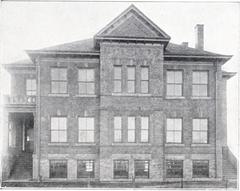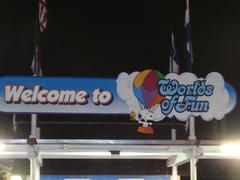East Building Kansas City Visitor Guide
Date: 01/08/2024
Introduction
Welcome to the East Building, a remarkable landmark situated in the heart of Kansas City, Missouri. This guide is designed to provide you with all the essential information for planning a visit, including operational hours, ticketing details, and the building’s rich historical backdrop. Constructed in the late 19th and early 20th centuries, the East Building stands as a testament to Kansas City’s architectural evolution and its cultural significance. Initially built during a period of rapid urban development, the East Building’s design reflects a blend of Beaux-Arts and Art Deco styles, showcasing the city’s ambition and resilience during economically challenging times. As part of Kansas City’s efforts to modernize its skyline and infrastructure, the building has played a pivotal role in the city’s commercial and governmental activities, becoming a cornerstone of its historical narrative (Discover Walks).
Table of Contents
- Introduction
- Origins and Architectural Significance
- Early 20th Century Development
- Architectural Features
- Role in Kansas City’s Development
- Visiting Information
- Preservation and Modern Use
- Frequently Asked Questions (FAQ)
- Additional Resources
- Conclusion
Origins and Architectural Significance
The East Building, located in Kansas City, Missouri, is a notable structure that has played a significant role in the city’s architectural and cultural landscape. Constructed in the early 20th century, the building exemplifies the architectural trends of its time, blending elements of Beaux-Arts and Art Deco styles. The design of the East Building reflects the city’s ambition during a period of rapid growth and modernization.
Early 20th Century Development
Kansas City experienced substantial growth in the early 1900s, driven by its strategic location as a transportation hub and its burgeoning industries. The East Building was conceived as part of a broader effort to modernize the city’s infrastructure and skyline. The building’s construction began in 1928 and was completed in 1931, a period marked by significant economic challenges due to the Great Depression. Despite these challenges, the East Building stood as a testament to the city’s resilience and forward-thinking vision.
Architectural Features
The East Building’s architecture is a blend of Beaux-Arts and Art Deco styles, characterized by its ornate detailing, symmetrical design, and use of modern materials. The building’s façade features intricate stone carvings, large arched windows, and decorative elements that highlight the craftsmanship of the era. The interior of the building is equally impressive, with grand hallways, marble floors, and elaborate light fixtures that reflect the opulence of the early 20th century.
Role in Kansas City’s Development
The East Building played a crucial role in Kansas City’s development, serving as a hub for various commercial and governmental activities. Its strategic location in the heart of the city made it a focal point for business and civic engagements. Over the years, the building has housed numerous offices, including those of prominent local businesses and government agencies. This central role has cemented the East Building’s place in the city’s history and its ongoing narrative of growth and innovation.
Visiting Information
- Visiting Hours: The East Building is open to visitors Monday through Saturday from 9 AM to 5 PM. It is closed on Sundays and public holidays.
- Tickets: General admission is free. Guided tours are available for a fee of $10 per person.
- Special Events: The East Building regularly hosts special events, including exhibitions, cultural performances, and business conferences. Check the official website for upcoming events and ticket information.
- Guided Tours: Guided tours are offered daily at 10 AM and 2 PM. These tours provide in-depth insights into the building’s architectural features and historical significance.
- Photography Spots: The grand hallways, marble floors, and ornate façade are popular spots for photography. Visitors are encouraged to capture the beauty of the building while respecting its historical integrity.
Preservation and Modern Use
In recent years, there has been a concerted effort to preserve the East Building and its historical significance. Recognizing the building’s architectural and cultural value, local authorities and preservationists have undertaken various restoration projects to maintain its original charm while adapting it for modern use. Today, the East Building continues to serve as a functional space, housing offices, retail establishments, and cultural venues that contribute to the vibrant life of Kansas City.
Frequently Asked Questions (FAQ)
Q: Where can I buy tickets for guided tours? A: Tickets for guided tours can be purchased at the East Building’s main entrance or online through the official website.
Q: Are there any dining options nearby? A: Yes, the East Building is located in a bustling area with numerous dining options within walking distance.
Q: Is the East Building accessible to people with disabilities? A: Yes, the building is equipped with ramps and elevators to ensure accessibility for all visitors.
Additional Resources
For those interested in learning more about the East Building and its place in Kansas City’s history, several resources are available. The Kansas City Historical Society offers detailed information on the building’s history and architectural significance. Additionally, guided tours and educational programs provide in-depth insights into the building’s past and present.
Conclusion
References
- Discover Walks. (n.d.). 10 Historical Events That Happened in Kansas City. https://www.discoverwalks.com/blog/united-states/10-historical-events-that-happened-in-kansas-city/
- Nelson-Atkins Museum of Art. (n.d.). https://www.nelson-atkins.org
- Kansas City Historical Society. (n.d.). Things to Do in Kansas City. https://travelinmissouri.com/things-to-do-in-kansas-city/


